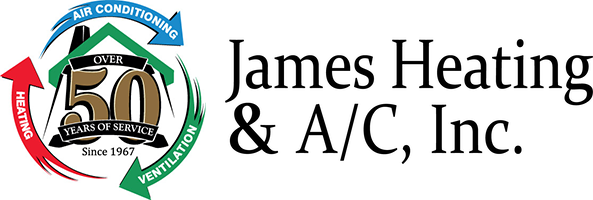
You shouldn’t have to give up comfort or spend a lot to keep your home at the right temperature during warm days.
But what is the best temperature, exactly? We go over ideas from energy experts so you can choose the best temperature for your house.
Here’s what we advise for the most energy-efficient setting for air conditioning in Lexington.
Recommended Thermostat Settings for Summer
Most households find placing the thermostat at 72-73 degrees is most comfortable. However, if there’s a major difference between your inside and exterior warmth, your AC bills will be larger.
This is our advice based on the U.S. Department of Energy (DOE) and ENERGY STAR®.
While at home: 78 degrees. While that appears hot, there are approaches you can keep your residence cool without having the AC running frequently.
Keeping windows and curtains down during the day keeps cool air where it needs to be—indoors. Some window coverings, such as honeycomb shades or plantation shutters, are made to deliver more insulation and improved energy savings.
If you have ceiling fans in your home, the DOE says you can raise thermostat temperatures about 4 degrees warmer without giving up comfort. That’s since they cool by a windchill effect. Because they cool people, not spaces, shut them off when you move from a room.
If 78 degrees still appears too uncomfortable on the surface, try conducting a test for a week or so. Start by upping your setting to 78 degrees while you’re home. Then, steadily turn it down while following the suggestions above. You may be shocked at how comfortable you feel at a higher temperature setting.
While away: 88 degrees. There’s no rationale for keeping the air conditioning running all day while your house is vacant. Switching the setting 7–10 degrees warmer can save you as much as 5–15% on your electrical expenses, according to the DOE.
When you come home, don’t be tempted to put your thermostat colder than 78 to cool your house more rapidly. This isn’t productive and typically produces a more expensive electrical cost.
A programmable thermostat is a helpful approach to keep your temp controlled, but it requires setting programs. If you don’t set programs, you risk forgetting to raise the set temperature when you go.
If you want a convenient fix, think over installing a smart thermostat. This thermostat connects with your phone, so it is aware when you’re at your house and when you’re out. Then it intuitively changes temperature settings for the best savings. How much exactly? An estimated $180 each year on heating and cooling, according to ENERGY STAR.
Another benefit of installing a smart thermostat? You can use your phone to monitor and adjust temperature settings from nearly anywhere.
While sleeping: Around 70 degrees. While ENERGY STAR advises 82 degrees, that could be unpleasant for many families. The majority of people sleep better when their sleeping space is chilly, so that’s why the National Sleep Foundation suggests 60–67 degrees. But that could be too cold, depending on your PJ and blanket preference.
We recommend trying an equivalent test over a week, moving your temp higher and slowly decreasing it to pinpoint the best temp for your family. On cool nights, you may discover keeping windows open at night and using a ceiling fan is a better idea than using the air conditioner.
More Methods to Use Less Energy This Summer
There are added methods you can spend less money on AC bills throughout hot weather.
- Get an energy-efficient cooling system. Central air conditioners only are effective for about 12–15 years and become less efficient as they get older. An updated air conditioner can keep your home comfier while keeping utility bills small.
- Book annual air conditioner service. Regular air conditioner maintenance keeps your equipment working properly and could help it run at greater efficiency. It might also help lengthen its life span, since it helps pros to spot little problems before they cause a major meltdown.
- Put in new air filters regularly. Read manufacturer instructions for replacing your air filter. A dirty filter can cause your system to short cycle, or switch on and off too often, and drive up your cooling.
- Measure attic insulation levels. Nearly 90% of homes in the United States don’t have adequate insulation, according to the Insulation Institute. Most southern climates require 13–14” of attic insulation, while northern climates should have 16–18”.
- Have your ductwork inspected. Ductwork that has separated over time can seep cool air into your attic, walls or crawl space. This can lead to big comfort problems in your home, such as hot and cold spots.
- Seal openings, doors and windows. Keep warm air where it should be by closing holes. You can also caulk or weather strip doors to trap more cold air within your home.
Use Less Energy During Hot Weather with James Heating & A/C, Inc
If you need to use less energy during hot weather, our James Heating & A/C, Inc specialists can help. Give us a call at 336-853-6070 or contact us online for additional information about our energy-saving cooling products.

